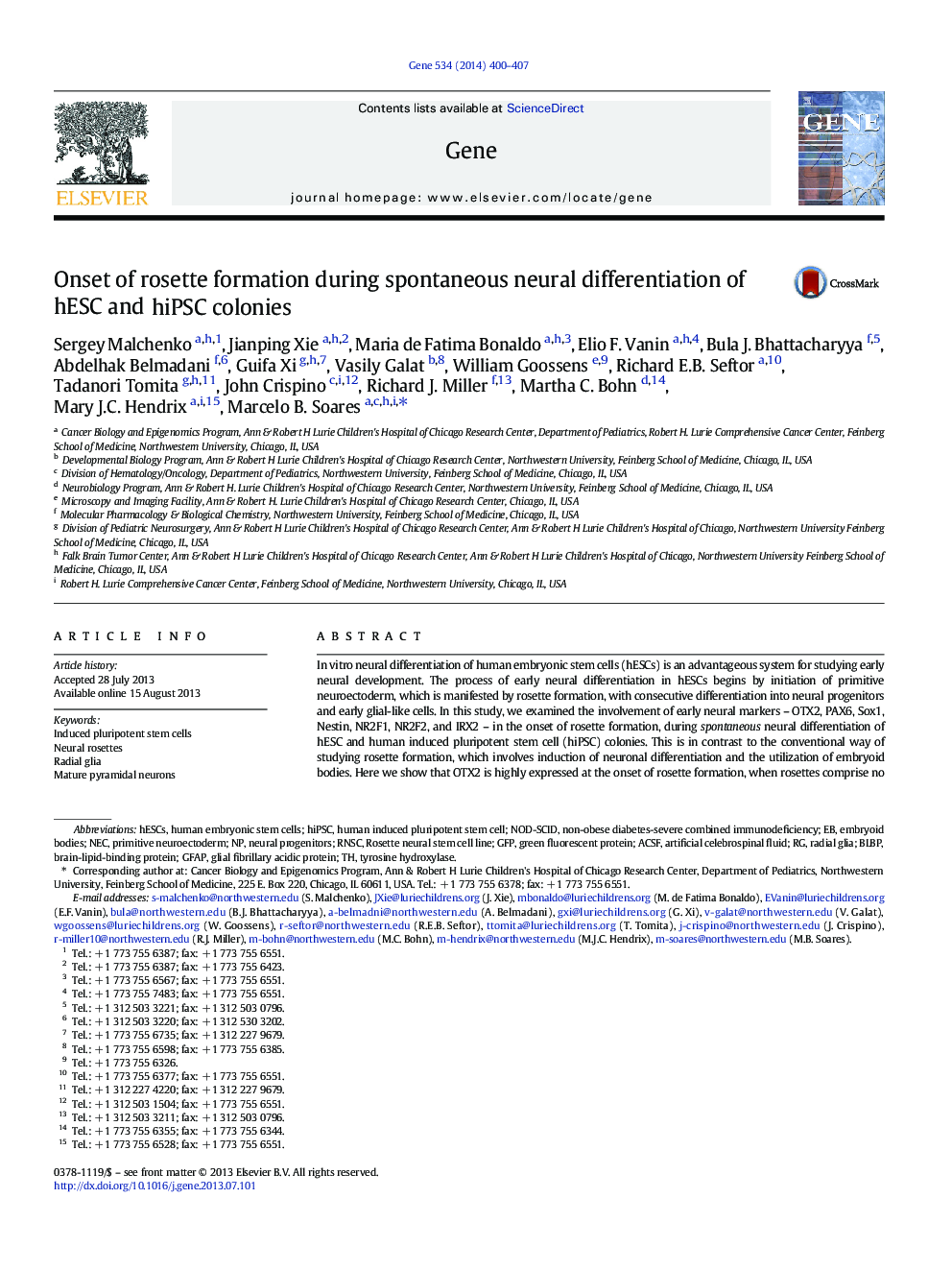| Article ID | Journal | Published Year | Pages | File Type |
|---|---|---|---|---|
| 5906035 | Gene | 2014 | 8 Pages |
â¢Spontaneous neural differentiation in hiPSC colonies.â¢Radial glial enriched neural stem cells.â¢In vivo, radial glial enriched neural stem cells turned into pyramidal neurons.
In vitro neural differentiation of human embryonic stem cells (hESCs) is an advantageous system for studying early neural development. The process of early neural differentiation in hESCs begins by initiation of primitive neuroectoderm, which is manifested by rosette formation, with consecutive differentiation into neural progenitors and early glial-like cells. In this study, we examined the involvement of early neural markers - OTX2, PAX6, Sox1, Nestin, NR2F1, NR2F2, and IRX2 - in the onset of rosette formation, during spontaneous neural differentiation of hESC and human induced pluripotent stem cell (hiPSC) colonies. This is in contrast to the conventional way of studying rosette formation, which involves induction of neuronal differentiation and the utilization of embryoid bodies. Here we show that OTX2 is highly expressed at the onset of rosette formation, when rosettes comprise no more than 3-5 cells, and that its expression precedes that of established markers of early neuronal differentiation. Importantly, the rise of OTX2 expression in these cells coincides with the down-regulation of the pluripotency marker OCT4. Lastly, we show that cells derived from rosettes that emerge during spontaneous differentiation of hESCs or hiPSCs are capable of differentiating into dopaminergic neurons in vitro, and into mature-appearing pyramidal and serotonergic neurons weeks after being injected into the motor cortex of NOD-SCID mice.
